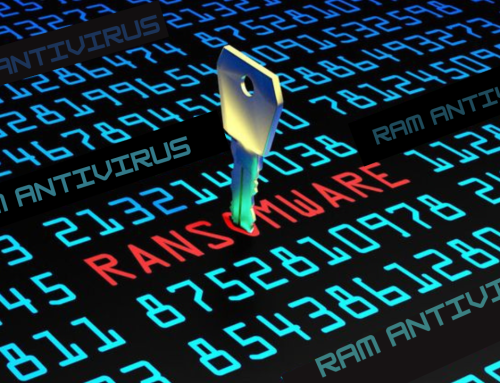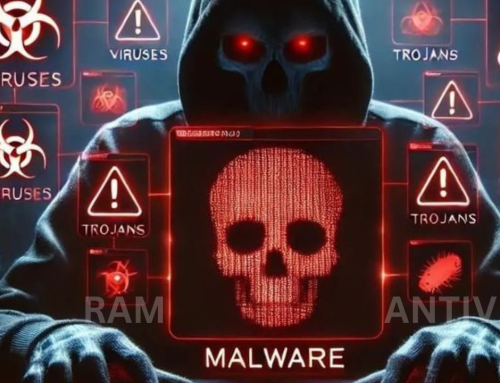RAM Antivirus: Your Protector Against Deepfake Deception
Deepfake
Deepfake is artificial intelligence-synthesize content typically in videos, images, or audio. It makes another person say or do something he or she never do. Deepfakes are useful and valid applications in entertainment and art but impose serious threats such as misinformation and identity theft.
Impact of deepfake
Misinformation and Disinformation
Deepfakes use to create fake stories in such a manner. So It becomes tough for people to distinguish between authentic and manipulated content. Thus, widespread misinformation can spread quickly, especially in the political field.
Privacy Violation
Deepfake technology use to create non-consensual explicit materials, violating the privacy of an individual and causing emotional and psychological injury.
Fraud and Impersonation
Deepfakes can be used for scamming and identity theft as they show a person in a video call or voice message, which may have eventual financial costs or reputation damage.
Political Consequences
Deepfakes can be political campaign instruments to damage opponents or influence public opinion, hindering democratic and electoral processes.
Legal and Ethical Implications
This rise of deepfakes raises vital questions concerning consent, copyright liabilities, as well as the liability of hosts who propagate them.
Discover Detection Technology
Since deepfakes continue intensifying threats, there is increased pressure on detecting and countering these deepfakes with technologies and tools that would strengthen cybersecurity.
Key Methodologies-creation of the deepfake
1. Data Collection
Sought Media Collection: Get a broad collection of images, videos, and audio recordings containing the likeness that is meant to be recreated. This can contain many angles, expressions, and emotional states.
2. Training the AI
Model Selection: Deepfakes primarily employ a form of AI model called a Generative Adversarial Network, GAN for short.
Training: The generator produces unreal images and these are classified by the discriminator against real images. The two networks train together, and improvements to the output come from the generator. after feedback based on the output of the discriminator until the produced media is highly realistic.
3. Face Mapping
Facial Recognition: The system scans through all the pictures and footage, forming a 3D model of the face, mapping facial features and applying how they could move.
Expression and Movement Capture: It learns to mimic facial expressions and movements so generated content bears a semblance to reality.
4. Content Generation
Creating the Deepfake: Using the trained model, the generator combines learned features and expressions with the target media, for instance, a video of another person.
Synchronization: Audio will also be manipulated or generated to sync visual elements so that the lips move appropriately to words spoken.
5. Post-Processing
Refining: The produced deepfake can undergo post-processing to ensure it is of good quality with minimal artifacts and can be highly realistic. This may also involve color correction, edge blending, and audio refining.
Final Cut: Further edits added to incorporate the deepfake into the broader picture it means to fit into, like a video or presentation.
How RAM Antivirus Works in Fighting Deepfakes
Deepfake Detection Technology
Advanced deepfake detection tools available within RAM Antivirus are found to identify manipulated media. This technology helps analyze videos and audio for signs of tampering so that content can be verified before sharing or acting on it.
Real-Time Alerts
The tool will immediately alert the user if suspicious content is detected. This line of defense serves as an active measure, equipped with the proper knowledge for users to be even more discerning against falling into deepfake scams and misinformation.
Continuous Upgrades and Learning
The rapidly advancing deepfake technology landscape is something that the RAM Antivirus keeps upgrading the detection algorithms in, thus ensuring that the software remains armed with the latest cybersecurity concepts that can be beneficial for the users.
Regular Updates
The antivirus software will be constantly updated to understand the latest created threats, such as those of deepfakes.
Advanced Threat Detection
Advanced machine learning and AI will be developing as part of this technology. and will try to recognize it. Then the change in content, like video or image.
Community Reporting
Add features about reporting suspected deepfake content based on analyses that may improve detection algorithms.
Multi-layered Security
Call for multi-layered security rather than antivirus and firewalls alone, but also anti-malware solutions.
Privacy Protections
Implement privacy measures that limit the exposure of personal data. That using in the creation of rather convincing deepfakes.
To download RAM Antivirus:
Visit the official website, https://ramantivirus.in/ select the version compatible with your operating system, search for the antivirus you want, and click the “Download” button. Once the file downloads. please open it and follow the instructions to complete the installation. After installation, launch RAM Antivirus to begin protecting And Securing your device.







Leave A Comment